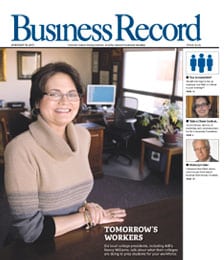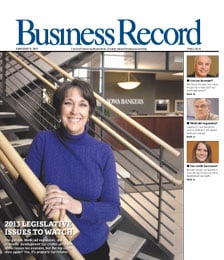Experts make mutual fund picking look tough; it isn’t

Dear Mr. Berko:
I have $37,000 to invest in mutual funds and I’m trying to understand the analysis terms to help me make better fund selections. Can you, in words an average person can understand, explain the following seven terms that are used to evaluate mutual funds? The terms are style, style drift, R-squared, alpha, beta, sharpe ratio and standard deviation. I thought selecting a fund would be easy, but these measurement criteria are confusing and very difficult for me to understand.
D.R., Syracuse, N.Y.
Dear D.R.:
In my omniscient opinion, selecting a suitable mutual fund is as easy as falling off a piece of cake. It’s a two-step process.
1. From the various magazines you’re reading, select six mutual funds that look good to you. Then in one column on a legal pad, jot down each fund’s annual return for the past 10 years and compare them side by side to the last 10-year annual return of the Standard & Poor’s 500 index. Initially this might not make much sense, but I promise that when you finish the exercise with the first fund, a 1,000-watt light bulb will click on and you’ll say: “Wow, this is easy, and it makes sense to me.”
2. Pure gut instinct. This can often be superior to all the inscrutable mathematical mishmash used by Wall Street’s gurus.
I know that the Securities and Exchange Commission, the New York Stock Exchange and the compliance departments of member firms all warn that we must not rely on past performance to predict future results. Well, that’s pure tommyrot.
The terms for which you want definitions all use past performance to predict potential future performance. I believe that past performance is among the most important criteria one can use to predict future results.
Standard deviation (SD): Measures how much a fund’s annual return (during any specific year) can be expected to vary from its average annual return (the average of many annual returns). It is said that a fund’s annual return is expected to fall within one standard deviation of its average annual return two-thirds of the time. For example, if the Ding Dong Fund has an average annual return of 13 percent and a SD of 7, it can be expected to have an annual return in any specific year that is between 6 percent and 20 percent two-thirds of the time. The performance of the Ding Dong Fund is expected to fall outside that range one-third of the time.
Beta: Measures a fund’s sensitivity to changes to its benchmark (chemicals, health care, construction, retail, etc.) A beta of 1 tells us that if Ding Dong’s benchmark moves 15 percent during the year, Ding Dong will move 15 percent. A beta of 1.5 indicates that it will move 1.5 times the changes in the benchmark.
R-squared (R2): This measures the degree to which Ding Dong’s price change is related to an external benchmark. So if Ding Dong has an R2 of 79 relative to the S&P 500, one could assume that 79 percent of the Ding Dong’s historical price behavior can be attributed to the overall movement of the S&P 500 index.
Style: Wall Street has determined that there are 42 individual investment styles. For example: mid-cap growth, mid-cap balanced, mid-cap value, mid-cap blend, global, single country and international. Every fund is classified based upon its long-term investment history.
Style drift: This measures the tendency of a fund’s management to deviate from its specific investment style over a period of time.
Alpha: This measures Ding Dong’s actual results and compares them to the results one could expect from a statistically average fund in the same category with the same beta. If Ding Dong returns more then its beta predicts, it has a positive alpha, and if it returns less, it has a negative alpha.
Sharpe ratio: This is a nonsense number concocted by a couple of dotty Nobel Prize-winning economists. If Ding Dong produces a 25 percent return this year with a SD of 10 while the T-bill returned 5 percent, its Sharpe ratio equals 2. The calculation looks like this: 25 percent annual return minus the 5 percent T-bill rate divided by an SD of 10 gives us a Sharpe ratio of 2. The higher the Sharpe ratio, the better the fund’s returns have been relative to the amount of investment risks it takes. Humbug!
Lastly, there’s Berko’s 50/50/90 Rule: When your choices are down to two funds, you have a 50/50 chance of selecting the best one. However, there’s a 90 percent probability that no matter which fund you select, it will be the wrong one.
Please address your financial questions to Malcolm Berko, P.O. Box 1416, Boca Raton, Fla. 33429 or e-mail him at malber@adelphia.net.







